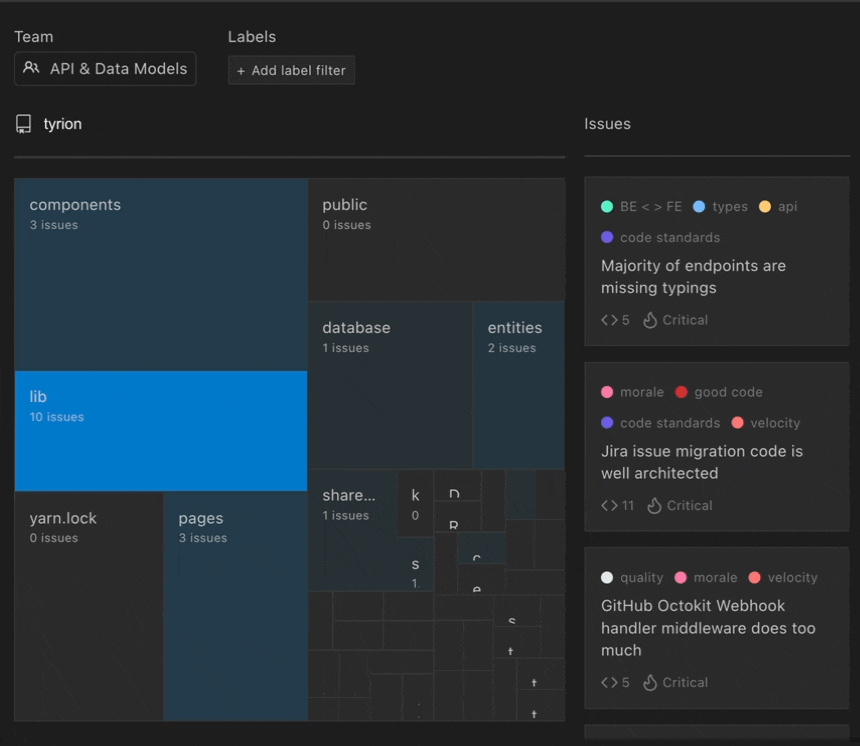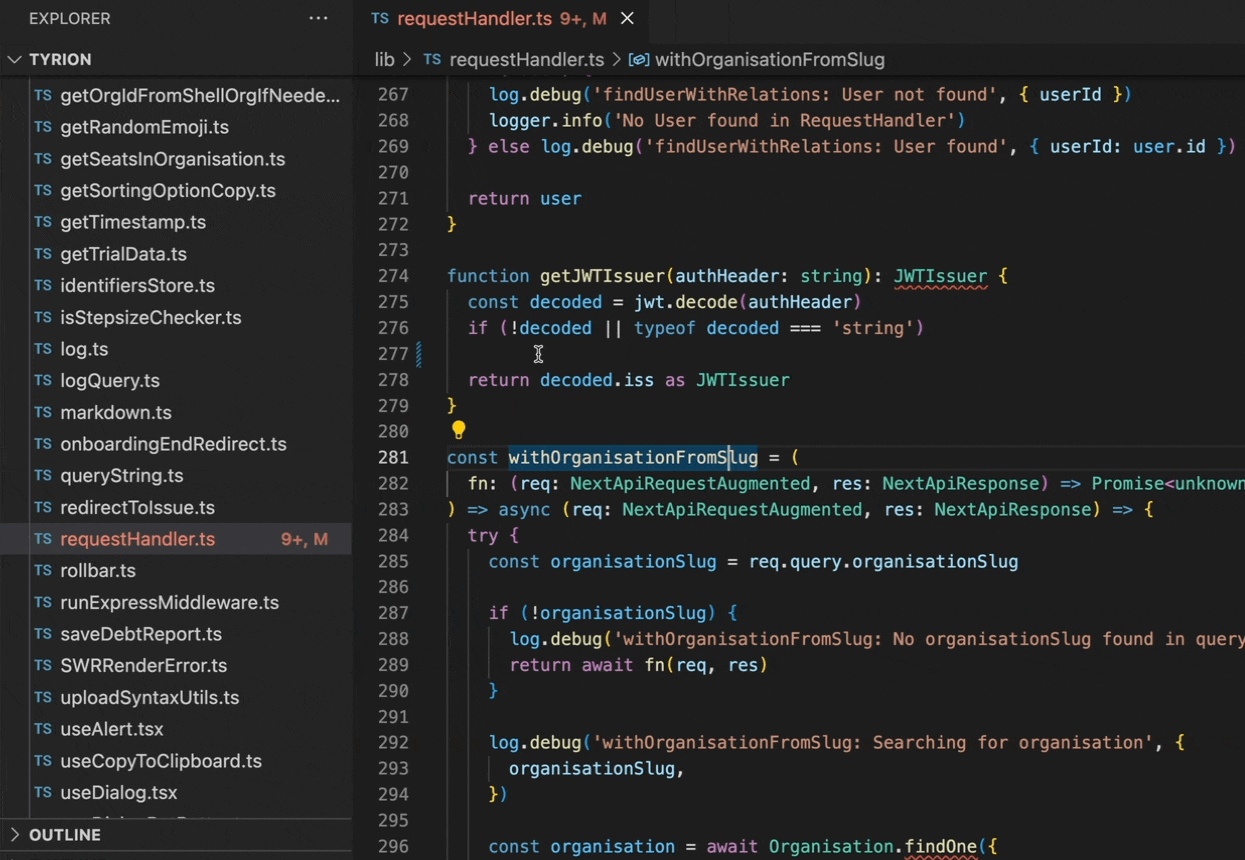The Engineer's Complete Guide to Backlog Grooming
Welcome to our complete guide to backlog grooming – or backlog refinement – for engineers.
This guide is for software engineers and engineering leaders looking for a deep understanding of backlog grooming.
We’ll discuss the benefits of backlog grooming, the components of a successful grooming session, and how to use the Agile and Scrum methodology to prioritise tasks.
This guide is packed with crucial knowledge and best practices to help you make the most of your backlog grooming process.
Thanks for joining us, and let's get started!
This article will look at:
- What is backlog grooming?
- Why is backlog grooming essential?
- Why does issue quality matter?
- The role of Product Manager and Engineers
- How to run backlog grooming sessions
- Useful tools for backlog grooming
What are backlog grooming and backlog refinement?
Backlog grooming is also called backlog management, refinement, pre-planning, or storytime, especially in agile and scrum processes.
Backlog grooming is the process of organising tasks in a backlog to help the engineering team prioritise and finish them.
During a backlog grooming meeting, the team discusses, reviews and prioritises backlog items.
This process helps ensure that your engineers are working on impactful, achievable and well-defined tasks. As a result, it’s a crucial part of any successful Agile development process.

Why backlog grooming matters
Backlog refinement sessions are about communication. They keep the whole product team updated and on the same page. This is especially true for teams working on related tasks or tasks that need to be completed in sequence.
Without organisation, backlogs get messy quickly. Messy backlogs make prioritising work difficult, which creates a vicious cycle when you’ve got an existing backlog (like Jira).
- Issues get logged
- Issues lack context
- Prioritisation becomes hard
- Backlog becomes overwhelming
- Repeat
Backlog grooming, combined with good issue-creation practices, prevents this cycle. It has the effect of ensuring clear ownership of tasks among different people or teams. It also helps remove the risk of scope creep by paring back tasks to those that will have an impact.
For backlog grooming to be effective, your team needs high-quality issues which have context innately. Backlog grooming sessions are a great place to create accountability for issue quality.
Pro tip 💡 To decide what to put into your issue tracker, use Stepsize's editor extensions. Stepsize allows engineers to create issues straight from their editors and link them to code. Visibility on crucial issues makes backlog grooming way easier and faster.

Backlog grooming helps projects progress and enables product managers and owners to plan sprints and complete tasks.
It starts with issue quality
Good issue quality is a prerequisite for successful backlog grooming. High-quality issues in the backlog ensure engineers can review and prioritise issues effectively.
When it comes to improving issue quality, context is king. Good issues:
- Descriptively explain the problem
- Outline any possible fixes to consider
- Are linked to code
- Are labelled with useful categories
- Have an impact level (also known as priority)
- Have an effort level
One of the main barriers to good issue quality is the friction caused by the poor ergonomics of issue trackers. When tracking issues isn’t pleasant, there’s less incentive to use them properly. This friction can be reduced (or avoided altogether) with the right tools. More on this later.
Backlog grooming can only be effective when your team has a consistent process for creating high-quality issues.
Who should attend the backlog grooming meeting?
The product owner or product manager will likely be the person who facilitates the backlog grooming meetings. These meetings need to be collaborative and cross-functional.
Team members representing different roles or functions should be present to provide their input. Backlog grooming shouldn’t usually be mandatory for all engineers.
You want representation, but you don't want too many people, or the meeting becomes unproductive.
The role of product managers and engineers in backlog grooming
Product Managers and engineers play essential roles in the backlog grooming process.
The Product Manager should ensure the team follows the Agile methodology and that tasks are split into small components. Attendees work together to develop viable solutions to provide the customer with the most value.
The role of the Product Manager / Owner is to facilitate the meeting while ensuring the team is discussing tasks strategically:
- Setting an agenda
- Chairing the session to ensure that the agenda is on track and that the meeting moves forward instead of getting caught up dissecting a particular backlog item.
- Sending a summary after the session
- Monitoring progress
The engineers provide technical insights to assist with the backlog grooming process:
- Ensure that issues in the backlog are high-quality
- Provide context around feature issues
- Highlight codebase issues, such as technical debt which is being accumulated
- Spot technical risks
- Suggest potential solutions
Preparing for a backlog grooming session
Engineers should always prepare for backlog grooming sessions. Engineers should be prepared to discuss technical considerations, individual features and technical risks.
- Before the session, review the backlog. Are there any general updates or changes that need discussion?
- Identify features that should be discussed.
- Consider what technical debt has been accumulated and how it might impact future work.
- Consider technical risks associated with the parts of the codebase which are being worked on
- Consider any suggestions you have as to how to allocate sprint time which is reserved for handling technical debt.
Top tip 1 💡Use Stepsize’s visualisation tool to see the technical risks associated with different parts of your codebase. You can filter these by impact. For example, you could focus on technical debt issues impacting morale.

Top tip 2 💡It’s crucial that fixing technical debt is a continuous process. There are two methods you could use. The first is to allocate 15-20% of resources to refactoring code and fixing bugs in every sprint cycle. The second is to allocate entire sprints to dealing with tech debt on a regular basis. Learn more about managing technical debt here.
What happens in a backlog grooming meeting?

- Review issues in the backlog. Go through issues one by one, discussing the impact of each issue compared with the complexity and feasibility of resolving it. Tag issues with labels, impact, effort and context to help you do this.
- Prioritise and estimate issues in the backlog. Conduct task estimation to establish the required work for each issue and methodically prioritise each.
- Identify codebase issues and technical risks. Analyse technical debt and technical risks related to the codebase, and consider how this should impact the backlog.
- Clarify user stories and backlog issues. Discuss any questions or ambiguities that arise, and modify them as needed.
- Remove out-of-date issues. Outdated issues in the backlog are distracting and should be removed.
- Assign tasks to engineers. This should be based on their skillsets and availability.
- Plan for the next session. Set expectations and an agenda for the next backlog grooming session.
Deciding how to prioritise your product backlog is crucial. We wrote an article about how to prioritise your product backlog here which we recommend reading if you need to develop your prioritisation strategy.
If your codebase is heavy with legacy code, read our complete guide to legacy code to understand how to handle it.
How long should a meeting take?
No one likes long meetings. Too easy to start talking about videos on YouTube or what everyone's having for lunch. Keep it short, ideally an hour at most, every couple of weeks.
What should the outcome be?
The primary goal of a backlog grooming session should be to leave with your next sprint planned and prioritised. Tasks in that sprint should be impactful and aligned with your organisation’s strategy.
If your team’s issue quality is good, then regularly grooming the backlog with a range of stakeholders should ensure the backlog is in good shape. Teams can be confident that the engineers have an up-to-date and accurate view of what is happening in the project.
Attendees should leave with a solid grasp of the technical risks and how these are being managed in upcoming work.
Tools for backlog grooming
Backlog grooming doesn’t need to be complicated. In most cases, effective backlog grooming can be performed with just a couple of tools.
- Issue tracking software. Your team probably has this already. Examples include Jira, Asana, Linear or Trello.
These all have their own advantages and disadvantages, but our favourite is Jira. It has some issues, but it has many features and add-ons to help you work better.
Here are our favourite extensions for supercharging Jira.
- Issue management tools. Good issue quality is a prerequisite for successful backlog grooming. Relying on creating issues directly within your issue tracker causes several problems, such as…
- Fewer issues are logged because of the poor ergonomics of tracking issues in Jira or similar tools.
- Issues are hard to resolve because they are not linked to code – issues created using traditional issue tracking tools inherently lack codebase context.
- Few issues get resolved because issues are vague.
Use a tool like Stepsize to remove the friction. Stepsize enables you to create, view and manage issues directly from your codebase. This can transform how you track issues and lead to behavioural change in how your team approaches technical risk.

Learn how to get started with Stepsize here. It works with Visual Studio, VS Code, JetBrains.
- Codebase review tools. Visibility is crucial for effectively understanding a codebase and effectively prioritising issues.
Stepsize also allows you to do this, too. Use the visualisation tool to understand where issues sit within your codebase and how they impact your codebase, your product and your team.
Top tip 💡You'll see plenty of articles about product management and backlog grooming best practices that talk about using whiteboards, sticky dots, sharpies and sticky pads. We think they should be ignored. A shared screen and a project planning board are much more effective, and nobody needs to take notes later.
Key takeaways
☑️ Backlog grooming ensures you’re spending your team’s resources on impactful tasks
☑️ High-quality issue tracking is a prerequisite for effective backlog management
☑️ Use tools like Jira and Stepsize to improve your backlog grooming process and issue quality
☑️ Aim to leave a backlog grooming session with clear deliverables
Product backlog refinement is a crucial part of a successful software development process. When your team has good strategies to track and prioritise the right issues, you can reduce technical debt, manage technical risk and ship the right features faster.
Watch this webinar
Register for this webinar


.svg)


.png)

.png)
